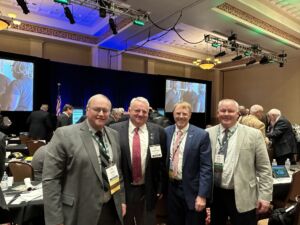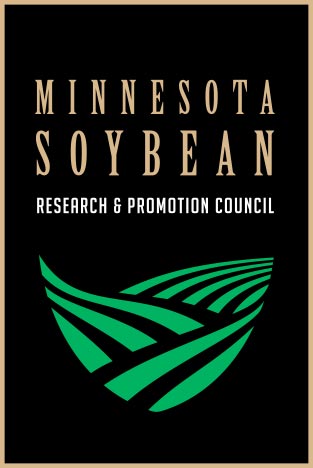USB farmer leaders lock arms, set FY26 budget
USB farmer leaders lock arms, set FY26 budget

In the year ahead, the United Soybean Board (USB) will boost demand for U.S. Soy, drive on-farm resilience and bring value to the nearly half-million U.S. soybean farmers. Led by its 77 farmer-leaders, including four who represent Minnesota, USB recently approved a $121.3 million budget for the 2026 fiscal year, strategically allocating funds across vital research, promotion and education investments. This spans the food, feed, fuel, industry, exports and sustainable production market segments.
USB continues taking the long view on the checkoff pathway toward improving farmer profitability.
“Just like we have done on our farms across the country, USB’s farmer-leaders have sharpened their pencils, identifying high-impact opportunities that provide return to America’s soybean farmers,” said Philip Good, USB chair from Macon, Miss. “Times are tough right now in the farm economy, and I can speak from experience dealing with the wettest growing season in my farming career. As soybean farmers navigate the trade and input uncertainty, along with unpredictable weather, the soy checkoff aims to be the long-term, steady hand on the rudder. We’re looking 5-10 years out to ensure that U.S. farmers have viable markets and innovation to protect against weather, weed and disease pressures.”
Minnesota soybean farmers have a strong representation on USB, with Minnesota Soybean Research & Promotion Council (MSR&PC) Directors Patrick O’Leary, Gene Stoel and Tom Frisch (who also serves on USB’s Executive Committee), along with Lawrence Sukalski, sitting on USB.
Stoel, who terms off USB in December 2025, said he and his colleagues are on the same page.

Pictured here in 2023, Minnesota farmers (left to right) Gene Stoel, Lawrence Sukalski, Patrick O’Leary and Tom Frisch represent the state’s farmers through serving on the United Soybean Board.
“We reviewed the funding for FY26 and heard where those checkoff investments will be going, with emphasis on finding uses of soy more than how to produce more,” said Stoel, who farms near Lake Wilson. “For example, we focused on exports, biofuels and new uses. And the whole board was together, so everyone was able to hear what was going on in all of the different work groups. In my nine years on the board, this is the first time that 100% of the board members that were present voted in favor of all expenses.”
The board approved the budget during the USB’s July meeting in Norfolk, Va., prioritizing strategic investment in several areas such as animal health and nutrition, infrastructure, production research and international trade. In addition, the board focuses its communication and education efforts on strengthening the reputation of U.S. Soy with customers, amplifying checkoff investments to inform U.S. soybean farmers and partnering with the over 30 state soybean boards on research and outreach.
“This year, USB’s focus was, ‘move the pile,’” said Sukalski, who farms in Martin County. “So, we put a lot of emphasis on demand. Another big word we use is ‘differentiate.’ We want to differentiate our crop from the rest of the crop around the world.”
Minnesota supports more than 25,000 soybean farmers, and for each dollar Minnesota farmers pay into the checkoff, growers earn $12.34 in return value. In the past five years, checkoff investments have led to an 18% increase in U.S. Soy exports and a 9% increase in domestic demand.
“When a Minnesota farmer sells soybeans, those checkoff dollars don’t just disappear into the abyss,” said Frisch, who farms near Dumont and is a past MSR&PC chair. “Those dollars are invested back into the soybean industry, bringing value to the farm gate.”
Key investments USB is prioritizing in the coming fiscal year include:
- Food
- Feed
- Fuel
- Industrial uses
- Exports
- Sustainable production
“Minnesota soybean growers and the checkoff program is infinitely stronger with USB on our team,” said O’Leary, who farms near Benson. “Investments are not made lightly, and USB spends a lot of time discussing how checkoff dollars are spent.”



